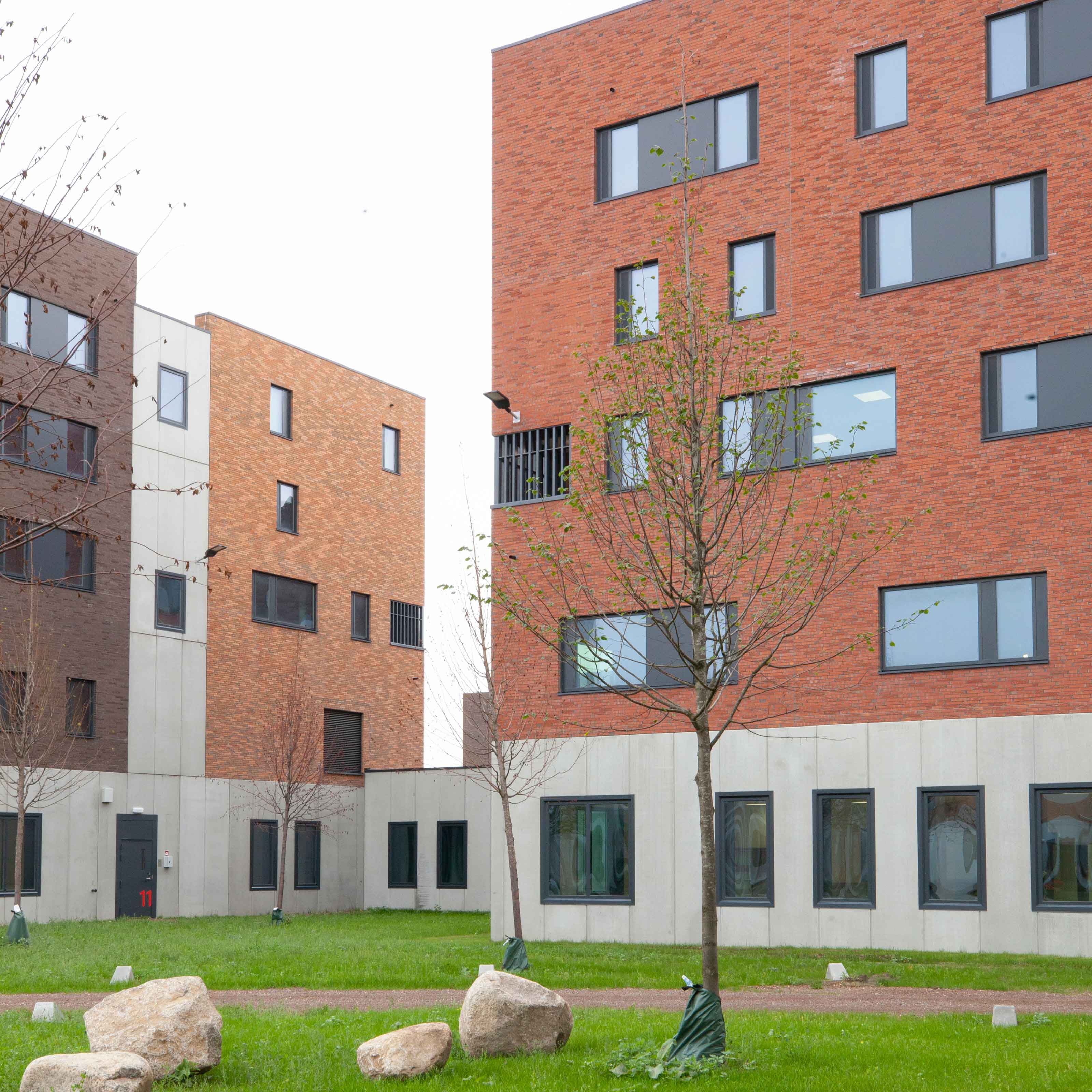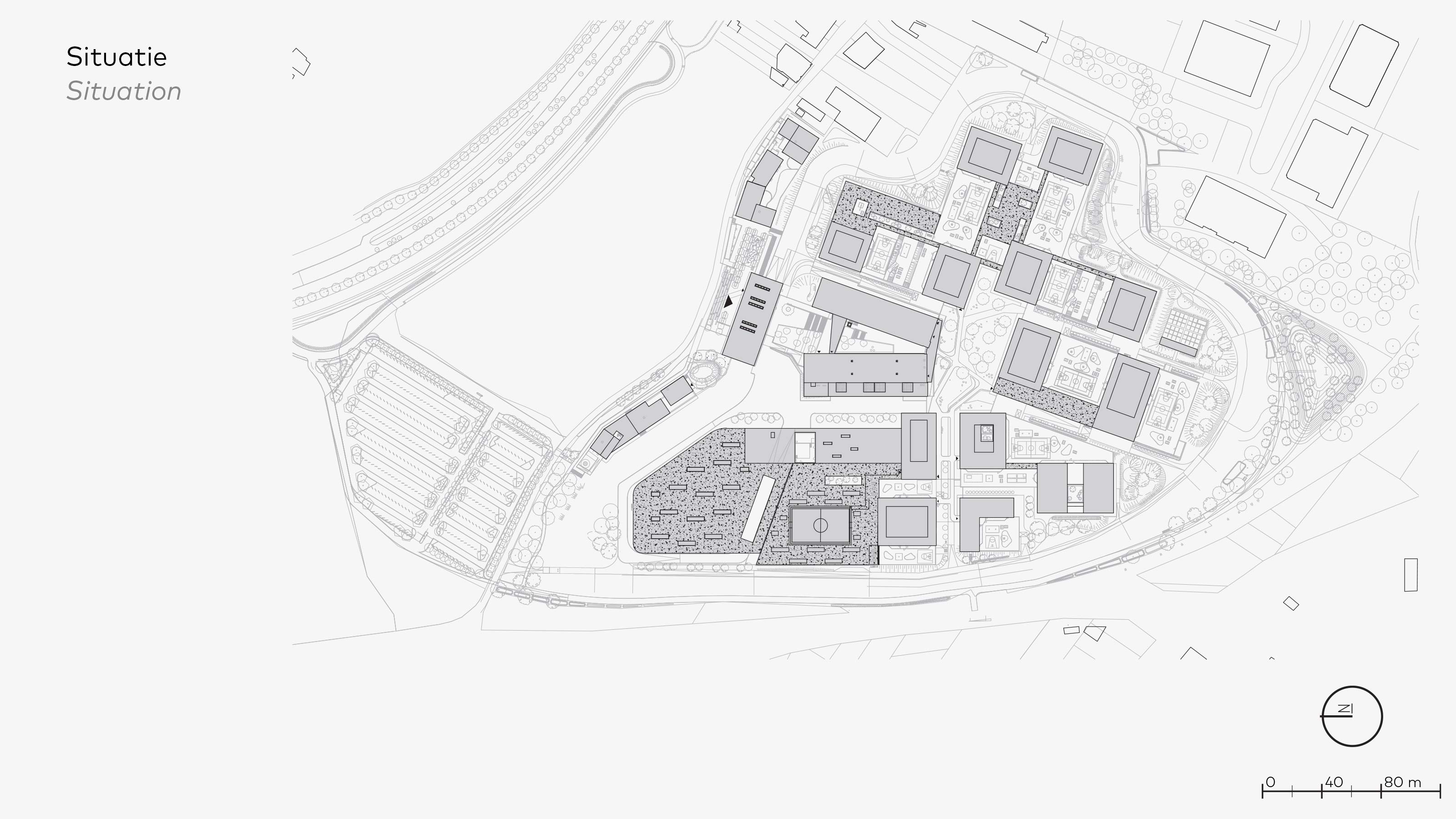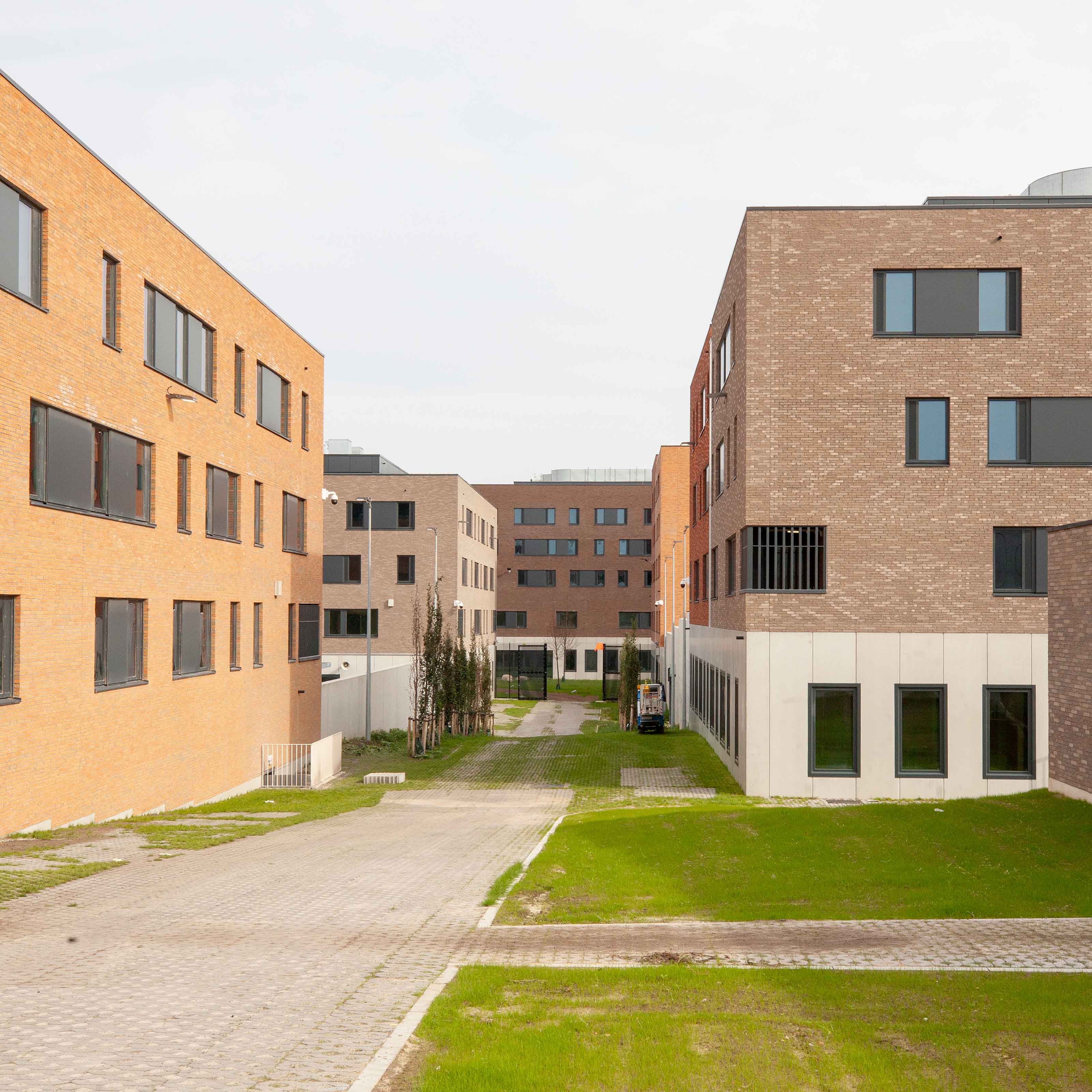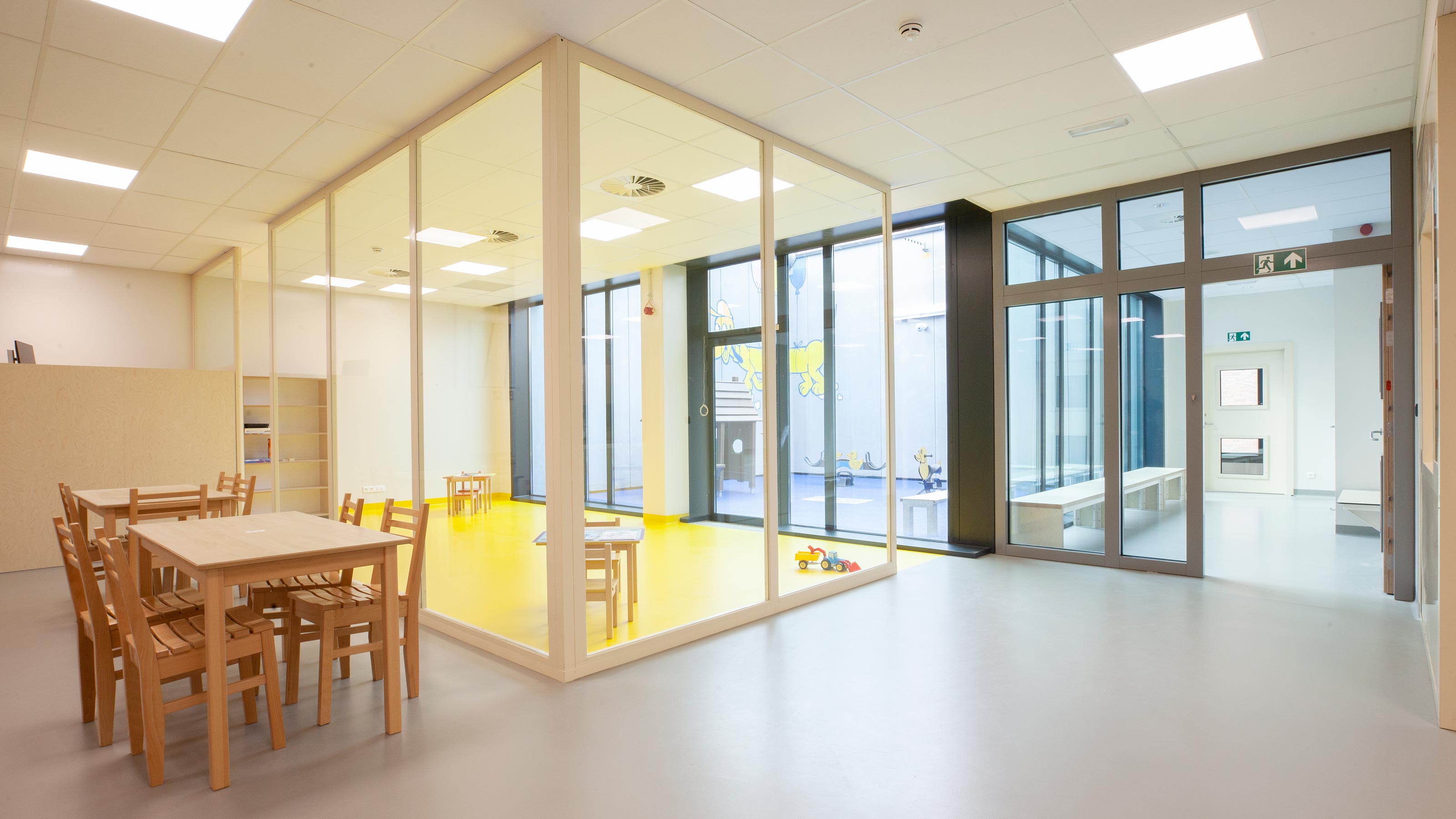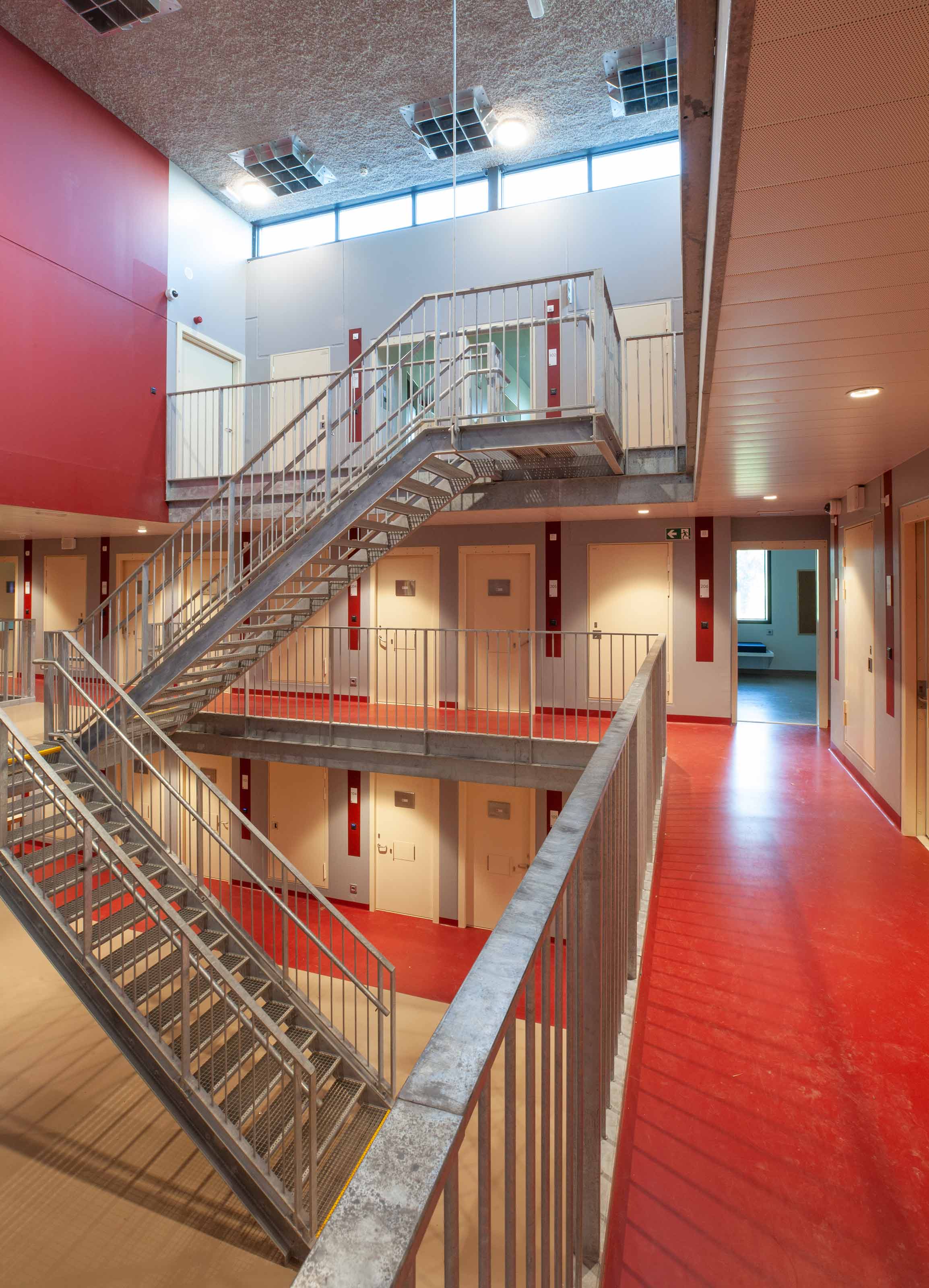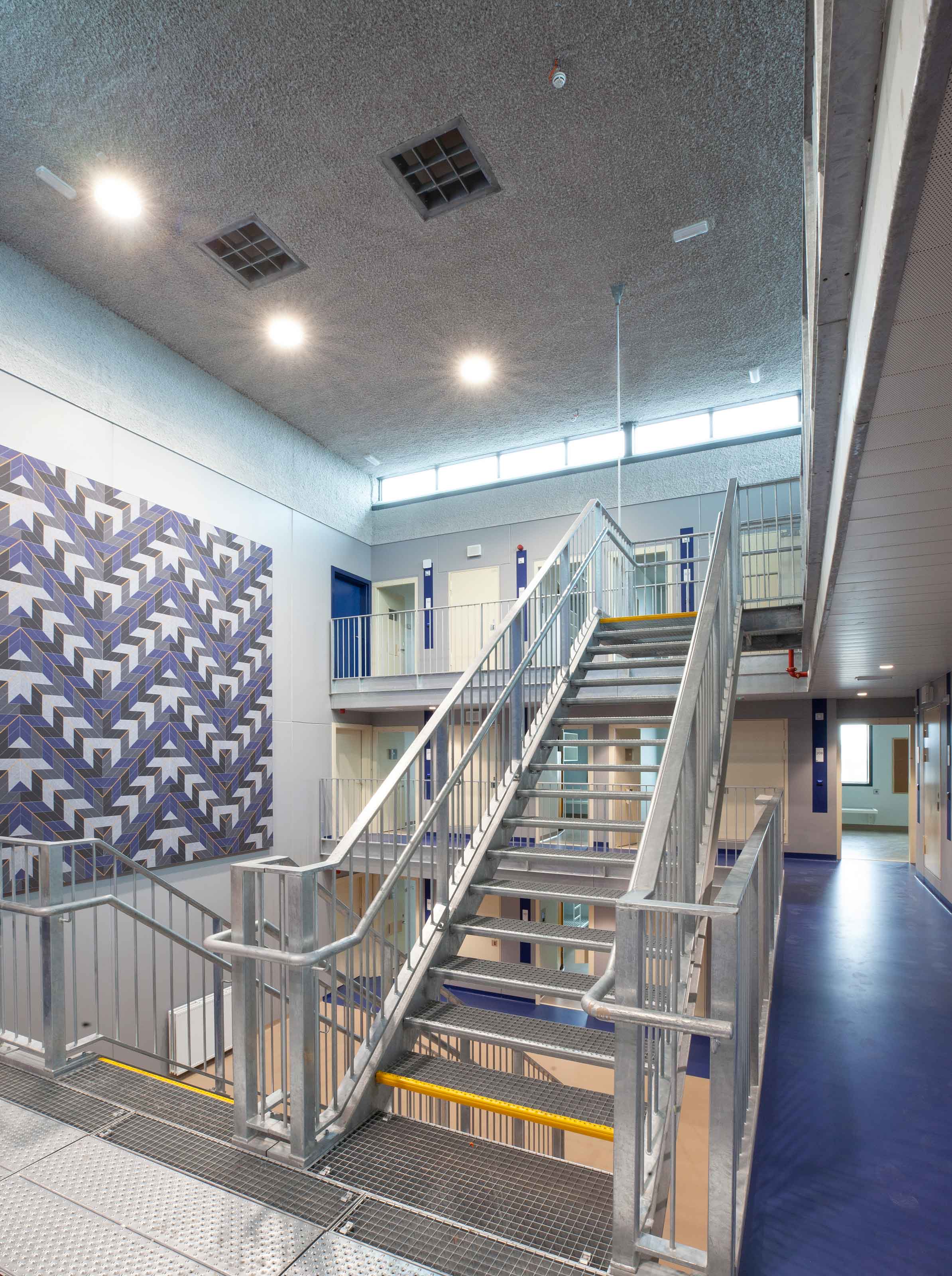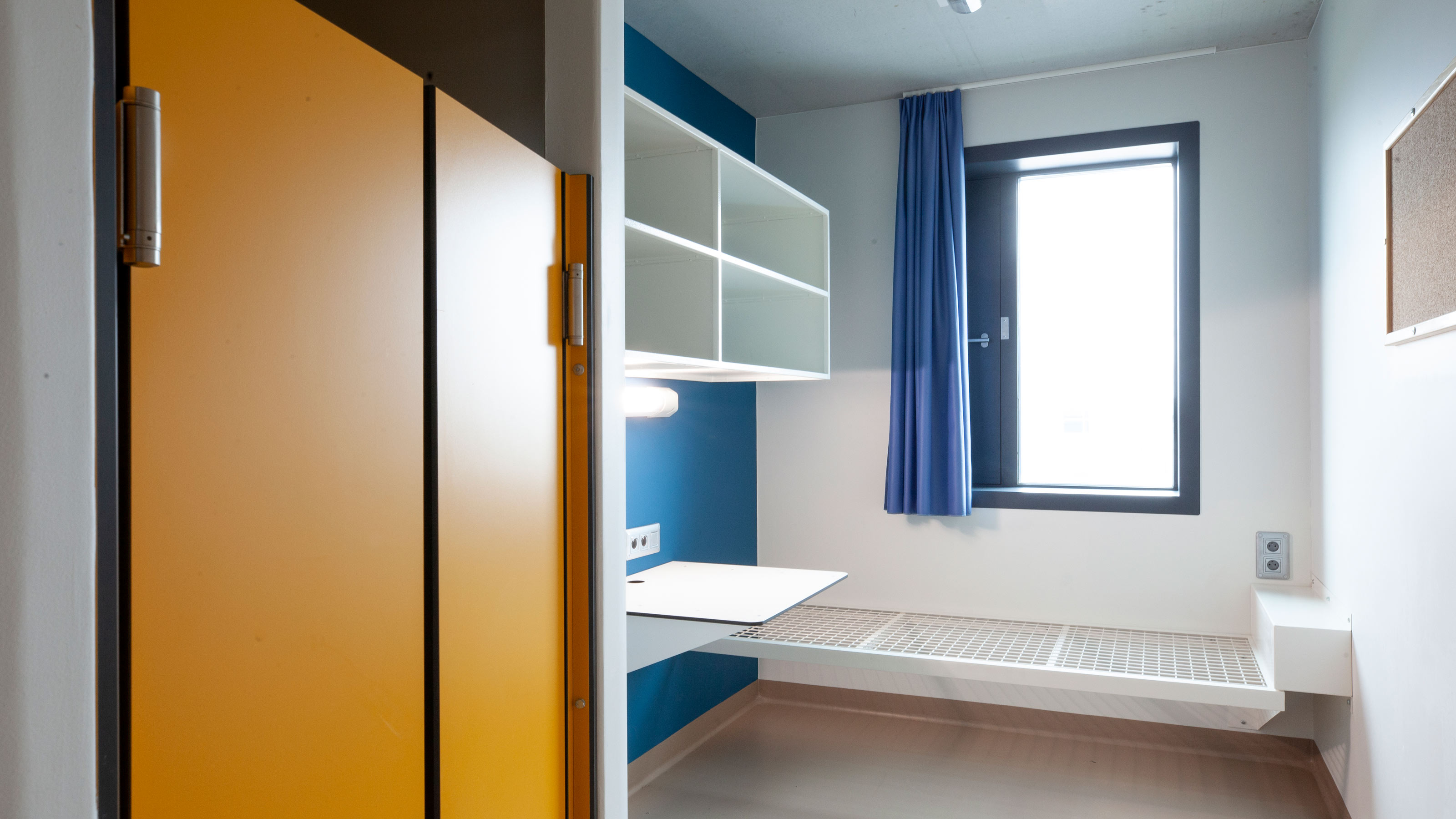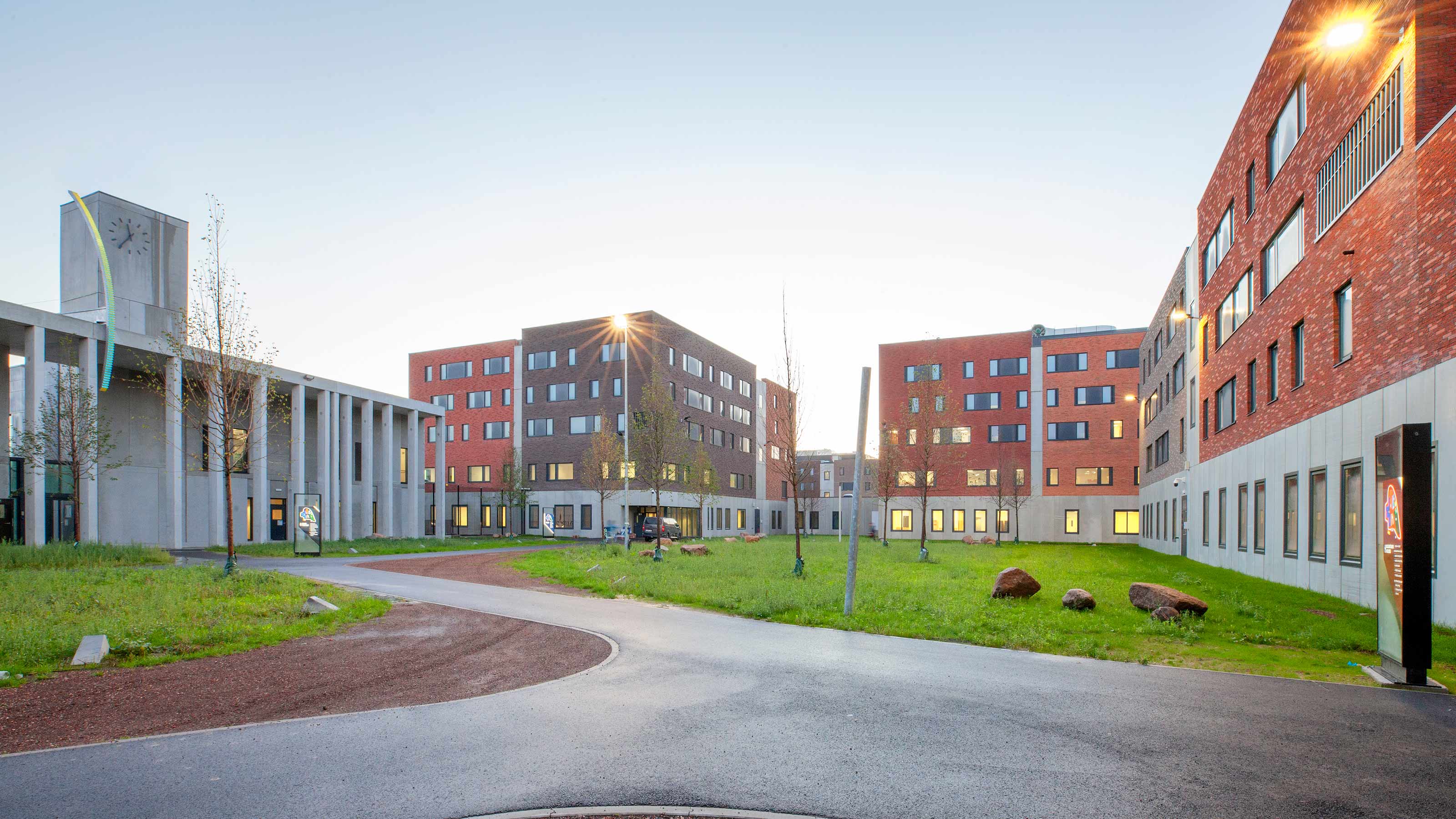Innovative design is flagship of Belgian prison system
The sustainable prison reflects the latest insights into detention and social reintegration. The design features a village layout: a central square at the juncture of streets lined with various buildings.
A new prison opened in Haren in Belgium in the autumn of 2022. The innovative design is based on a village layout. Instead of one large building, the prison consists of various smaller buildings, each distinctive and containing a different function. This layout contributes to a more humane detention climate in Belgium. With this new prison village, the Belgian prison system takes a giant step forward.
Genuine revolution in detention system
Belgium has 34 prisons, three of which will eventually be replaced by the new prison in Haren. Constructed over the past few years on a 15-hectare site near Brussels, the complex contains a total of 116,000 m². The Belgian-Spanish-Australian consortium – which received the commission from the Belgian federal government – is connected to the prison with a 250-year Design, Build, Finance and Maintain Contract (DBFM). The choice for the design by EGM architects, analogous to a village, demonstrates a decisive approach.
Up until this point, the detention climate in Belgium had remained rather conservative, dominated by the well-known Ducpétiaux concept (star-shaped prison) and the Panopticon model. However, neither of these models is compatible with the aim for a more humane policy. At the opening of the new prison, the Vice-Premier and Minister for Justice and the North Sea, welcomed the step forward: “The completion of the prison in Haren marks a genuine revolution in the way we tackle detention.”
This building is a flagship of the silent revolution in our prison system
Vincent Van Quickenborne, Minister for Justice in Belgium
Village-like scale and appearance
The Haren prison is laid out like a village, with a central square at the juncture of streets lined with various buildings. Each building houses a different function. This familiar typology reflects the small-scale character in size and materials, and creates a pleasant working and residential climate. As a result, life within the walls corresponds as much as possible with life on the outside. The ‘normal’ and friendlier environment stimulates good behaviour and a more humane approach to the detainees. This increases the chances of successful resocialization and a significant reduction in the level of recidivism. And it creates a more pleasant working environment for staff.
The various functions such as cells, workshops, social areas, sports facilities and therapy rooms are housed in separate, recognizable buildings. Detainees can move around the site using special badges acquired on the basis of permissions they have earned. That gives them control of their daily routine and daily rhythm, which has a positive influence on their wellbeing. It also ensures that they are better prepared for a successful return to society.
Normalization for the best possible re-integration
If you look at the complex you will indeed see a village, integrated into its context in a natural manner. For example, there are accommodation blocks articulated with various styles and colours, and a central green square surrounded by the main building with a distinctive bell tower, relaxation zones, a hospital, workshops, a vegetable garden, a sports pitch, a courthouse and family meeting spaces. Research among detainees reveals that the lack of everyday things is precisely what they experience as a major downside in older prisons. That was key in the design and processes in Haren.
Here, detainees who go to school or who go to work grab their coat and head out the door – not only of their cell but also of their accommodation block. In this way they experience a relatively normal daily rhythm, moving to another environment with its own temperature, acoustics, smell and direct sunlight. This sounds unimportant perhaps, but for people kept in prison, it increases normalization and resocialization. That is why each of the building types in the Haren prison village is ‘identifiable’.
Paradoxically, the small-scale is very much present in the Haren prison
Jurgen Van Poecke, head of Brussels prison accommodation
More detainees, less energy and water consumption
The Haren prison village is sustainable in many ways: from its design and construction to how it is used and its future. That is why the complex earned the BREEAM Very Good certificate. A range of energy-saving measures has been applied in the prison: solar panels, sedum roofs, 37,000 m² of planted greenery, a ground source heat pump system, and energy generation with a cogeneration plant (which uses residual heat to heat some of the water). A notable feature is the integral use of water. The prison consumes 77 percent less mains water than average owing to a combination of a grey water system and the recycling of water.
Even during construction the design was able to accommodate functional changes, and its future sustainability is guaranteed in the event of any large-scale changes in function. Buildings, either individually or collectively, can be used for different (social) purposes. That is because of the smart positioning and linking of the buildings on the site and the well-considered balance between the structural elements and flexible interiors.
Coaching and supporting detention supervisors
Haren prison village accommodates various types of detainees: male, female (some with children), youths, psychiatric patients and serious criminals. There is room for up to 1,190 inmates. They live together in small units of maximum 35 people, each of which operates relatively autonomously and forms a single social group. Everything is geared towards a well-operating system for both staff and detainees. As a result, staff can be much more than simply guards who open and close doors. They coach and support the detainees in how they spend their days with work, sport, relaxation and learning. Jurgen Van Poecke, head of the Brussels prison infrastructure: “Paradoxically, the small-scale is very much present in the Haren prison. The security staff deployed in the residential units are what we call detention supervisors who have received additional training in areas such as group dynamism.”
Haren prison village was designed by EGM architects in collaboration with the Belgian office B2Ai for the consortium Cafasso NV. The acting client was the Federal Buildings Authority in Belgium. Since its opening, the complex has been operated by the Federal Public Service.
Awards
The Plan Awards 2023 – Finalist – Mixed Use
Belgian Construction Award 2022 - Nomination - Smart Innovation
Belgian Construction Award 2021 - Nomination - Public Projects
World Architecture Festival 2019 - Winner - Future Projects
Public-Private Partnership Award 2019 - Winner
Team
EGM architects: André van Die, Andy Tromp, Dennie Groenendijk, Dennis Slijkoord, Dick Schram, Erik Fokkema, Erik Pijnacker, Gerben Vos, Jack Heskens, John Bothof, John de Jong, Marc van Vugt, Marianne Barendregt, Niels de Hart, Oscar Picon, Ton Bakker, Toon van Bokstel, Wim Breedveld
Partners: AAFM Facility Management B.V., AKS bouw, Anteagroup, Arcadis, BURO II & ARCHI+I, Corner3, Denys nv, FCC Construcción S.A., Grupo Typsa, INCORDA NV, Ingenieursbureau G. Derveaux NV, Lodewijk Baljon Landschapsarchitecten, M.O.O.CON GmbH, Smits Van Burgst Beveiliging BV, Technofisil, VK Engineering, 3E
Photography: Philippe van Gelooven | Global View (aerial)


